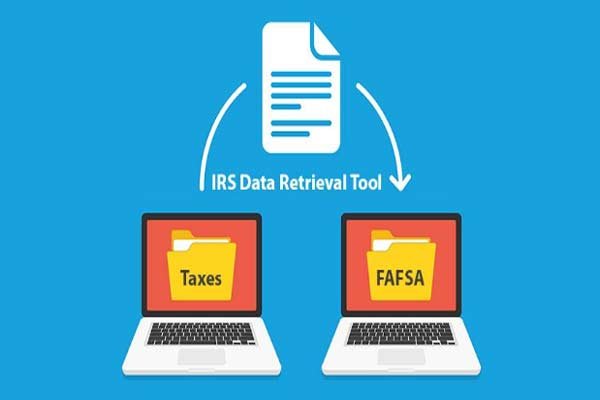Navigating the financial aid process can feel overwhelming, especially when facing the Free Application for Federal Student Aid (FAFSA) intricacies. However, maximizing your eligibility for financial aid can make a significant difference in making college more affordable.
The FAFSA is a gateway to federal grants, loans, work-study opportunities, and state and institutional aid, so understanding how to optimize your application is essential. This guide will explore practical tips for maximizing financial aid eligibility, helping you secure the funding needed to pursue your educational goals.
-
File Early
Filing the FAFSA early is one of the most effective ways to maximize your US financial aid chances. Each year, the FAFSA application opens on October 1, and submitting it as soon as possible can significantly benefit students. Many states and schools operate on a first-come, first-served basis for need-based aid, meaning funds may run out as applications are processed. By filing early, you ensure that your application is reviewed while maximum funds are still available, giving you a better chance at grants, scholarships, and other forms of aid that don’t need to be repaid.

In addition to accessing more aid, filing early allows ample time to correct errors or provide additional documentation. Late submissions can delay receiving an aid package, disrupting financial planning and even impacting enrollment decisions. Filing early also aligns with priority deadlines set by many institutions, which may be much earlier than the federal deadline. By meeting these deadlines, students can receive their financial aid offers sooner, allowing them to make more informed decisions about where to attend school and how to manage their finances for the upcoming academic year.
-
Use the IRS Data Retrieval Tool (DRT)
The IRS Data Retrieval Tool (DRT) is a valuable feature for FAFSA applicants, allowing them to quickly and accurately import tax information directly from the IRS into their application. Linking your FAFSA with the IRS DRT reduces the risk of errors in income reporting, which can affect your aid eligibility. This tool is beneficial because income details constitute a significant factor in determining financial aid packages, and even tiny mistakes in reporting can lead to delays, corrections, or a reduced aid offer. The DRT automates much of this data transfer, saving you time and minimizing the possibility of accidental omissions or incorrect entries.

In addition to convenience, using the DRT can improve the processing speed of your application. FAFSA applications submitted with IRS-verified tax data are often processed more quickly, allowing schools to issue financial aid packages sooner. This is crucial for students who want to meet priority deadlines or must finalize their financial planning well before the semester begins.
Additionally, schools are less likely to flag applications using the DRT for verification, an extra process that requires more paperwork and can delay your aid. The IRS DRT is a helpful tool that simplifies FAFSA submission while enhancing accuracy and processing speed.
-
List All Schools You’re Considering
When filling out the FAFSA, it’s essential to list every college you’re considering attending, even if you haven’t made a final decision yet. Including all potential schools ensures each institution has access to your FAFSA information, allowing them to create an aid package specific to their cost of attendance and available funding.
Some students mistakenly believe they should only list schools they are sure about. Still, casting a wider net maximizes your chances of receiving various aid offers and keeping options open. Each school on your list will receive your financial information and can begin evaluating your federal, state, and institutional aid eligibility.

Listing all schools is also strategic because it ensures you meet the financial aid priority deadlines that may vary from one school to another. Since some institutions award aid on a first-come, first-served basis, waiting to add a school later could limit your available aid.
Additionally, some states use your FAFSA data to determine state-based aid eligibility, which may require schools within your home state to be listed to access those funds. Including every school of interest increases your chances of a well-rounded aid package and a broader selection of financial options.
-
Don’t Overlook State-Specific Aid Programs
State-specific aid programs are an often overlooked source of financial support that can significantly reduce college costs. Each state has unique grants, scholarships, and work-study programs available only to residents or those attending in-state institutions. Students are typically considered for federal aid by completing the FAFSA, but many states also use FAFSA data to determine eligibility for their aid programs.
Some states have additional forms or requirements, so it’s essential to research your state’s financial aid office to understand any additional steps needed to qualify for these funds. This extra effort can lead to substantial aid, especially in states with generous programs to support in-state students.
State aid programs can also help bridge the gap when federal or institutional aid falls short. Many states prioritize students who file their FAFSA early, so applying promptly can increase your chances of receiving state funds. Some states provide aid for specific fields of study, like teaching or nursing, or students who plan to work within the state after graduation. Taking advantage of state-specific aid opportunities can lead to a more affordable college experience, allowing students to reduce reliance on loans and avoid additional financial burdens.
-
Count All Dependents and Household Members
Accurately counting all dependents and household members when filling out the FAFSA can significantly impact your Expected Family Contribution (EFC) which in turn affects your financial aid eligibility. The FAFSA calculates financial need by assessing family income and household size; an enormous household or more dependents can reduce your EFC and increase eligibility for need-based aid.
Dependents typically include anyone who relies on your family for financial support, such as younger siblings or other relatives who live with you, and household members include all people supported by the reported income. Making sure to count everyone accurately is essential to reflect your family’s actual financial situation.

Following FAFSA guidelines for who qualifies as a household member is also crucial. For example, siblings away at college often still count as part of the household if your family provides more than half of their support. Including all qualified dependents ensures your application portrays an accurate financial picture, which may make you eligible for additional grants or subsidized loans.
Mistakes in counting household members can result in a higher EFC, potentially reducing the aid offered. Taking care to count dependents correctly can help maximize the financial support you receive for college.
Conclusion
Maximizing your financial aid eligibility through FAFSA requires a strategic approach, from filing early to ensuring accuracy and exploring all potential sources of aid. By understanding the key factors that influence financial aid—such as income, family size, and state-specific programs—you can fully utilize the resources available to support your education.
Completing the FAFSA thoughtfully and thoroughly increases your chances of receiving federal aid and opens the door to state and institutional funding opportunities that can further reduce your college costs. With careful planning and attention to detail, you can secure a solid financial foundation to focus on achieving your educational goals without undue financial burden.
Follow – https://techlonely.com for More Updates

